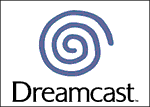Sega Integrates Dreamcast Technology
into Set Top Box Posted: January 29th, 2001.
Posted: January 29th, 2001.
Sega Integrates Dreamcast Technology into Set Top Boxas a part of its Architecture Licensing Strategy
Sega to join hands with PACE Micro Technology, PLC.to enable Dreamcast gameplay using set-top-boxes
Sega Corporation (Head office: Tokyo; President: Isao Okawa) announced today that Sega and Britain’s set-top-box developer, PACE Micro Technology, PLC, the leading company in the industry, have agreed to license-out Dreamcast technology and to jointly develop a set-top-box home gateway with built-in Dreamcast architecture. The product will be introduced to the public by PACE at roadshows, which are scheduled to take place in Britain and United States at the end of this month.
Sega will incorporate the main feature of Dreamcast, network connectivity, to diverse markets outside the gaming industry in order to expand its architecture licensing business. Set-top-boxes with built-in Dreamcast architecture, which will be Sega’s first product in this field, will have all the features of a set-top box such as broadband connection and a large capacity hard disc drive. Consumers will be able to play network games as well as view TV shows and other entertainment content using this single product, with perfect ease and freedom. This development will also allow Sega to go beyond the conventional console-dependent business and promote a new network business by providing network compatible content.
The new technologies incorporated in this product will:
- 1) greatly improve user-friendliness by enabling users to download games through a set-top-box with a broadband (xDSL, CATV, satellite, etc.) connection and large capacity hard disc drive, using a TV monitor in the home living room.
- 2) enable new services such as EPG Service for TV programs using powerful 3D graphics of a gaming console.
- 3) enable gamers to insert their customized characters into different games, interact with other players using chat and VoIP, and playback missed episodes by high-speed downloading.
These features will become available in the future, as broadband technology progresses and theintegration of gaming and TV broadcasting is realized.
The most notable advantage for Sega in providing Dreamcast architecture to digital devices other than game consoles is that these devices will enjoy complete compatibility with Dreamcast. Because these set-top-boxes with built-in Dreamcast architecture will be compatible with original Dreamcast titles, of which hundreds are already available worldwide, the tedious procedure of porting software to other platforms is no longer necessary for software developers. As a result, Sega will gain the opportunity to expand its software business by providing Dreamcast software to completely new platforms such as digital devices other than the conventional game console.
With the advancement of semiconductor and network technologies, set-top-boxes and digital home appliances such as TVs, new-concept digital appliances in the living room that will allow consumers to access diverse information and services all-in-one, will become increasingly popular in the 21st century. Network compatible digital appliances will also go beyond conventional stand-alone PCs, game consoles, set-top-boxes, audio visual appliances, PDAs, and cellular phones. At the same time, borderlines between different forms of interactive media will become more and more subtle as satellite and CATV broadcasting becomes digitized. Now that broadband networks are about to penetrate homes around the world, entertainment content, most of all games, are becoming the most attractive and sought-after element in the expansion of network society.
In this great global tide of network evolution, Sega aims to become “the world’s leading network gaming service provider” by focusing on these four core businesses:
- 1) Licensing of Dreamcast architecture;
- 2) interactive network video game content;
- 3) Narrow and Broadband electronic services to the online community and
- 4) Location-based amusement centers, featuring Sega’s unique contentdevelopment abilities and vast content asset.
News page content input by Dominic Robinson, 2001.
Reviewer of movies, videogames and music since 1994. Aortic valve operation survivor from the same year. Running DVDfever.co.uk since 2000. Nobel Peace Prize winner 2021.
